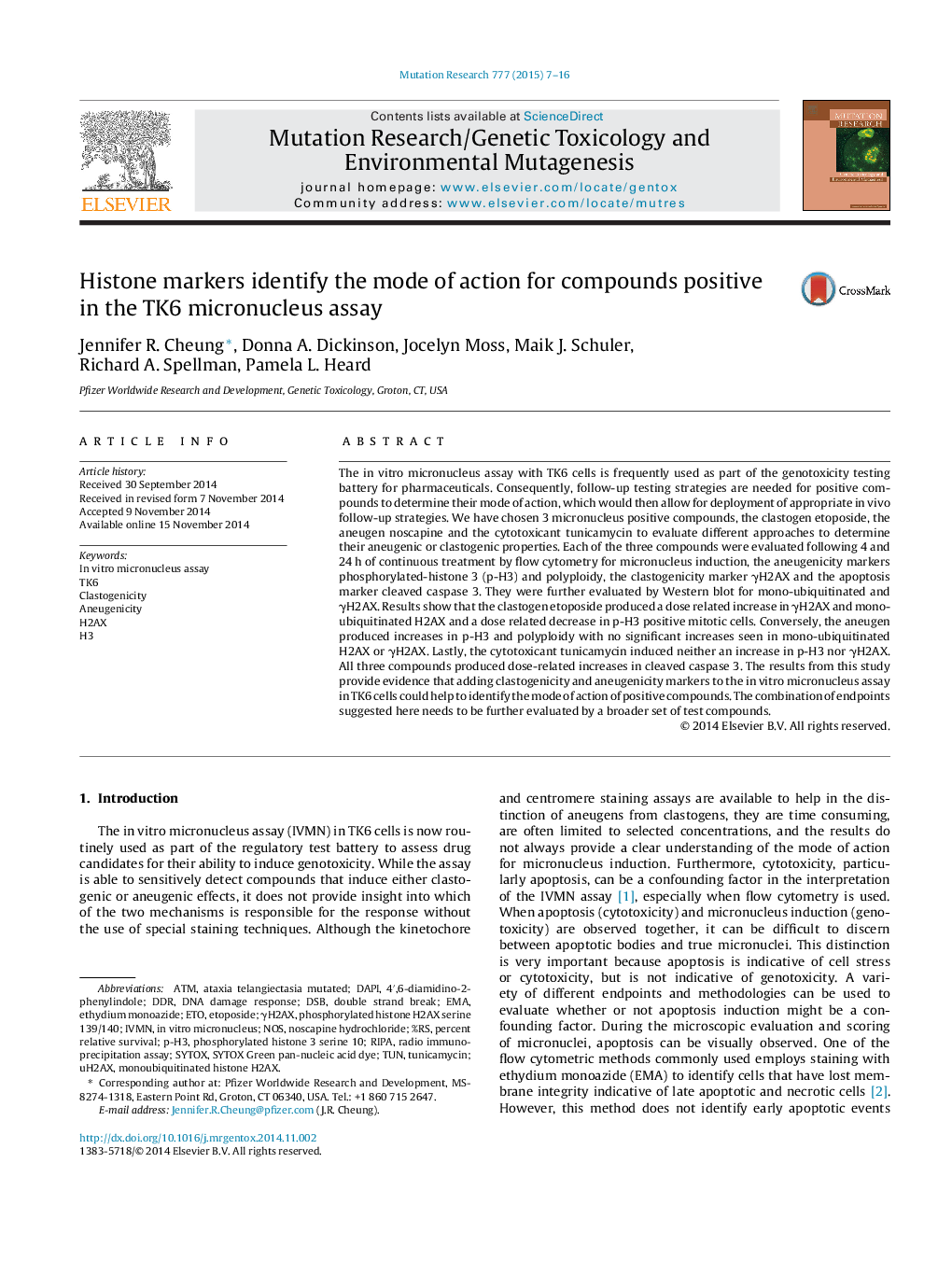| Article ID | Journal | Published Year | Pages | File Type |
|---|---|---|---|---|
| 2147895 | Mutation Research/Genetic Toxicology and Environmental Mutagenesis | 2015 | 10 Pages |
•Presents follow-up strategy for in vitro micronucleus positive test results.•Uses histone markers to discriminate aneugens, clastogens and cytotoxicants.•Improves specificity of TK6 in vitro mincronucleus assay.•Identifies novel biomarker for clastogenic compounds.
The in vitro micronucleus assay with TK6 cells is frequently used as part of the genotoxicity testing battery for pharmaceuticals. Consequently, follow-up testing strategies are needed for positive compounds to determine their mode of action, which would then allow for deployment of appropriate in vivo follow-up strategies. We have chosen 3 micronucleus positive compounds, the clastogen etoposide, the aneugen noscapine and the cytotoxicant tunicamycin to evaluate different approaches to determine their aneugenic or clastogenic properties. Each of the three compounds were evaluated following 4 and 24 h of continuous treatment by flow cytometry for micronucleus induction, the aneugenicity markers phosphorylated-histone 3 (p-H3) and polyploidy, the clastogenicity marker γH2AX and the apoptosis marker cleaved caspase 3. They were further evaluated by Western blot for mono-ubiquitinated and γH2AX. Results show that the clastogen etoposide produced a dose related increase in γH2AX and mono-ubiquitinated H2AX and a dose related decrease in p-H3 positive mitotic cells. Conversely, the aneugen produced increases in p-H3 and polyploidy with no significant increases seen in mono-ubiquitinated H2AX or γH2AX. Lastly, the cytotoxicant tunicamycin induced neither an increase in p-H3 nor γH2AX. All three compounds produced dose-related increases in cleaved caspase 3. The results from this study provide evidence that adding clastogenicity and aneugenicity markers to the in vitro micronucleus assay in TK6 cells could help to identify the mode of action of positive compounds. The combination of endpoints suggested here needs to be further evaluated by a broader set of test compounds.
